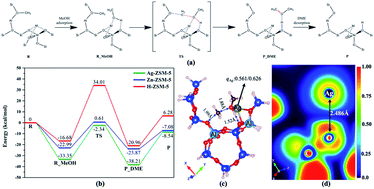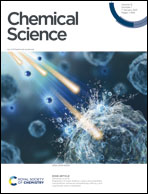Cooperative catalytically active sites for methanol activation by single metal ion-doped H-ZSM-5†
Abstract
Catalytic conversion of methanol to aromatics and hydrocarbons is regarded as a key alternative technology to oil processing. Although the inclusion of foreign metal species in H-ZSM-5 containing Brønsted acid site (BAS) is commonly found to enhance product yields, the nature of catalytically active sites and the rationalization for catalytic performance still remain obscure. Herein, by acquiring comparable structural parameters by both X-ray and neutron powder diffractions over a number of metal-modified ZSM-5 zeolites, it is demonstrated for the first time that active pairs of metal site-BAS within molecular distance is created when single and isolated transition metal cation is ion-exchanged with the zeolites. According to our DFT model, this could lead to the initial heterolytic cleavage of small molecules such as water and methanol by the pair with subsequent reactions to form products at high selectivity as that observed experimentally. It may account for their active and selective catalytic routes of small molecule activations.



 Please wait while we load your content...
Please wait while we load your content...